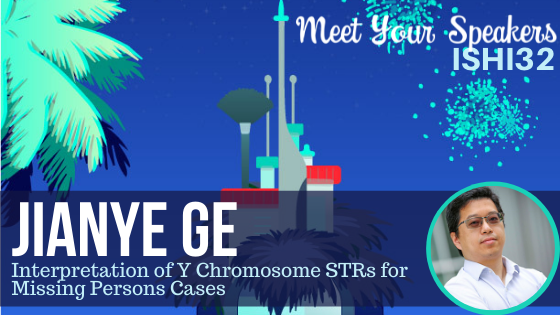Y chromosome STR haplotypes have been used in assisting forensic investigations primarily for identification and male lineage determination. The Scientific Working Group on DNA Analysis Methods (SWGDAM) Lineage Marker Committee published interpretation guidelines for Y-STR typing, which provide helpful guidance. However, these guidelines do not address the issue of kinship analysis with Y-STR haplotypes. Because of the high mutation rate of Y-STRs, there are complex missing person cases in which inconsistent Y-STR haplotypes between true paternal lineage relatives will arise and cases with two or more male references in the same lineage and yet differ in their haplotypes.
The Missing Persons Unit under the Center of Human Identification at the University of North Texas Health Science Center (UNTCHI) specializes in the DNA analysis and identification of missing persons cases and processes >50% unidentified human remains of the missing persons cases in the US. It is common within UNTCHI to encounter complex cases that would be better served with enhanced Y-STR interpretation procedures. In his presentation at ISHI this year, Jianye Ge will discuss more sophisticated interpretation methods and guidelines for Y-STR applications.
We chatted with Jianye about why more useful guidelines are needed, how publishing these guidelines can assist, and how forensic laboratories can gain access to a new software program.
Why do you feel that more useful guidelines are needed for the interpretation of Y-STR haplotype data?
The current SWGDAM guidelines on Y-STR focus on generating single source Y-STR profiles (such as allele designation and deduction of a Y-STR profile from a mixture sample) and haplotype frequency estimation (or random match probability) for an exact match. However, the guidelines do not address scenarios in which two (or more) mismatched profiles are compared. For example, an alleged father and the son have a one locus mismatch with a two-step repeat difference. In addition, for some missing person cases, multiple male family members may be available as references, and these references may have different Y-STR haplotypes due to mutation or false claimed relationships. In such complex cases, more sophisticated interpretation methods and guidelines are needed.
How will publishing these guidelines assist with complex missing persons cases?
The guidelines will allow the missing persons cases (or any kinship cases) to fully use the Y-STR profiles available in the reference pedigree and missing person and estimate the likelihood ratios just like the analysis with autosomal markers.
How will other forensic laboratories gain access to the software program under development?
Once the software program is completed and validated, it will be uploaded to software sharing website and made accessible to the forensic community free of charge. We may also hold a webinar to introduce the developed guidelines and the software program.
What tips would you give to someone who is just starting out in the field of forensics, or what is the best advice that you’ve received?
Learn new technologies and listen to your seasoned colleagues
Has there been anything good that came out of the pandemic that you’ll continue doing going forward?
Zoom meeting can be very productive if we spend time to learn how to use it. I particularly like the functions like recording and white board.
What is your favorite Disney character and why, or which Disney character do you most relate to and why?
Mickey Mouse. Mickey was the first Disney character I saw in the TV.
If you could have one superpower, what would it be and why?
Make the Texas summer cool
What’s one thing that others may not know about you?
I am a computer scientist, but not a statistician.
WOULD YOU LIKE TO SEE MORE ARTICLES LIKE THIS? SUBSCRIBE TO THE ISHI BLOG BELOW!
SUBSCRIBE NOW!


